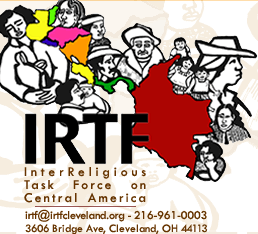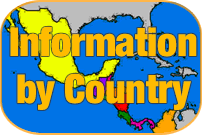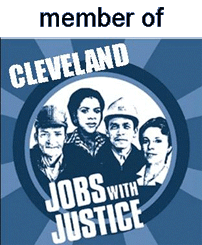Mexico


Mexico
Fact Sheet
Geography:
Mexico is bordered by the United States to the north and Belize and Guatemala to the southeast. Mexico is about one-fifth the size of the United States. Baja California in the west is an 800-mile (1,287-km) peninsula and forms the Gulf of California. In the east are the Gulf of Mexico and the Bay of Campeche, which is formed by Mexico's other peninsula, the Yucatán. The center of Mexico is a great, high plateau, open to the north, with mountain chains on the east and west and with ocean-front lowlands lying outside them.
People:
Population (2006 est.): 107,449,525
Languages: Spanish, various Mayan, Nahuatl, and other regional indigenous languages
Ethnicity/race: mestizo (Amerindian-Spanish) 60%, Amerindian or predominantly Amerindian
30%, white 9%, other 1%
Religions: nominally Roman Catholic 89%, Protestant 6%, other 5%
Literacy rate: 92% (2003 est.)
History:
At least three great civilizations—the Mayas, the Olmecs, and later the Toltecs—preceded the wealthy Aztec mpire, conquered in 1519–1521 by the Spanish under Hernando Cortés. Spain ruled Mexico as part of the viceroyalty of New Spain for the next 300 years until Sept. 16, 1810, when the Mexicans first revolted. They won independence in 1821.
From 1821 to 1877, there were two emperors, several dictators, and enough presidents and provisional executives to make a new government on the average of every nine months. Mexico lost Texas (1836), and after defeat in the war with the U.S. (1846–1848), it lost the area that is now California, Nevada, and Utah, most of Arizona and New Mexico, and parts of Wyoming and Colorado under the Treaty of Guadalupe Hidalgo. In 1855, the Indian patriot Benito Juárez began a series of reforms, including the disestablishment of the Catholic Church, which owned vast property. The subsequent civil war was interrupted by the French invasion of Mexico (1861) and the crowning of Maximilian of Austria as emperor (1864). He was overthrown and executed by forces under Juárez, who again became president in 1867.
The years after the fall of the dictator Porfirio Diaz (1877–1880 and 1884–1911) were marked by bloody political-military strife and trouble with the U.S., culminating in the punitive U.S. expedition into northern Mexico (1916–1917) in unsuccessful pursuit of the revolutionary Pancho Villa. Since a brief civil war in 1920, Mexico has enjoyed a period of gradual agricultural, political, and social reforms. The Partido Nacional Revolucionario (PNR; National Revolutionary Party), dominated by revolutionary and reformist politicians from northern Mexico, was established in 1929; it continued to control Mexico throughout the 20th century and was renamed the Partido Revolucionario Institucional (PRI; Institutional Revolutionary Party) in 1946. Relations with the U.S. were disturbed in 1938 when all foreign oil wells were expropriated, but a compensation agreement was reached in 1941.
Following World War II, the government emphasized economic growth. During the mid-1970s, under the leadership of President José López Portillo, Mexico became a major petroleum producer. By the end of Portillo's term, however, Mexico had accumulated a huge external debt because of the government's unrestrained borrowing on the strength of its petroleum revenues. The collapse of oil prices in 1986 cut Mexico's export earnings. In Jan. 1994, Mexico joined Canada and the United States in the North American Free Trade Agreement (NAFTA), which will phase out all tariffs over a 15-year period, and in Jan. 1996, it became a founding member of the World Trade Organization (WTO).
In 1995, the U.S. agreed to prevent the collapse of Mexico's private banks. In return, the U.S. won virtual veto power over much of Mexico's economic policy. In 1997, in what observers called the freest elections in Mexico's history, the PRI lost control of the lower legislative house and the mayoralty of Mexico City in a stunning upset. To increase democracy, President Ernesto Zedillo said in 1999 that he would break precedent and not personally choose the next PRI presidential nominee. Several months later, Mexico held its first presidential primary, which was won by former interior secretary Francisco Labastida, Zedillo's closest ally among the candidates.
In elections held on July 2, 2000, the PRI lost the presidency, ending 71 years of one-party rule. The new president, Vicente Fox Quesada of the conservative National Action Party (PAN), vowed tax reform, an overhaul of the legal system, and a reduction in power of the central government. By 2002, however, Fox had made little headway on his ambitious reform agenda. Disfavor with Fox was evident in 2003 parliamentary elections, when the PRI rebounded.
In 2004, a two-year investigation into the “dirty war,” which Mexico's authoritarian government waged against its opponents in the 1960s and 1970s, led to an indictment—later dropped—against former president Luis Echeverria for ordering the 1971 shooting of student protesters.
In 2005, Andrés Manuel López Obrador, the enormously popular mayor of Mexico City, emerged as a presidential candidate for the leftist Party of the Democratic Revolution. López Obrador seemed likely to defeat the party of the deeply unpopular incumbent, Vicente Fox. But in Oct. 2005, Felipe Calderón unexpectedly became the candidate of Fox's National Action Party (PAN), defeating Fox's chosen successor. By spring 2006, Felipe Calderón had caught up to López Obrador in opinion polls. In the July election, Calderón won 35.9% of the vote, a razor-thin margin over López Obrador, who received 35.3%. López Obrador appealed the election, but on Aug. 28 Mexico's top electoral court rejected López Obrador's allegations of fraud. His supporters held massive protest rallies before and after the verdict.
On September 6th, 2006, Felipe Calderón was declared President Elect by the electoral tribunal. His cabinet was sworn in at midnight on December 1, 2006 and Calderón was handed the presidential band by outgoing Vicente Fox at Los Pinos
Government and politics:
The 1917 Constitution provides for a federal republic with powers separated into independent executive, legislative, and judicial branches. Historically, the executive is the dominant branch, with power vested in the president, who promulgates and executes the laws of the Congress. Congress has played an increasingly important role since 1997, when opposition parties first formed a majority in the legislature.
Government and politics of Mexico takes place in a framework of a federal presidential representative democratic republic, whereby the President of Mexico is both head of state and head of government, and of a pluriform multi-party system. Executive power is exercised by the government. The President is both the head of state and head of government, as well as the commander-in-chief of the military. The president is elected directly from eligible votes and serves for six years, called a sexenio. Legislative power is vested in both the government and the two chambers of the Congress of the Union. The powers of the congress include the right to pass laws, impose taxes, declare war, approve the national budget, approve or reject treaties and conventions made with foreign countries, and ratify diplomatic appointments. The Senate addresses all matters concerning foreign policy, approves international agreements, and confirms presidential appointments. The Chamber of Deputies, addresses all matters pertaining to the government's budget and public expenditures.
The Judiciary is independent of the executive and the legislature.
There are three major political parties in Mexico:
- PAN: the National Action Party (Partido Acción Nacional). The PAN is a liberal conservative party.
President Felipe Calderón is a member of the PAN. - PRI: the Institutional Revolutionary Party (Partido Revolucionario Institucional). When it was founded it was somewhat socialist, currently it's a liberal party.
- PRD: the Party of the Democratic Revolution (Partido de la Revolución Democrática). The PRD is a left wing, somewhat socialist party.

President Felipe Calderón
On September 6th, 2006, Felipe Calderón was declared President Elect by the electoral tribunal. His cabinet was sworn in at midnight on December 1, 2006 and Calderón was handed the presidential band by outgoing Vicente Fox at Los Pinos
Economy:
According to the World Bank, Mexico ranks thirteenth in the world as regards GDP and has the fourth largest per-capita income in Latin America, following Argentina, Chile and Costa Rica. It is firmly established as an upper middle-income country. Since the economic crisis of 1994–1995, the country has made an impressive economic recovery. According to the director for Colombia and Mexico of the World Bank, the population below the poverty level has decreased from 24.2% to 17.6% in the general population and from 42% to 27.9% in rural areas from 2000-2004.
Mexico has a mixed economy that recently entered the trillion dollar class. It contains a mixture of modern and outmoded industry and agriculture, increasingly dominated by the private sector. The number of state-owned enterprises in Mexico has fallen from over a thousand in 1982 to fewer than one hundred in 2005. Recent administrations have expanded competition in seaports, railroads, telecommunications, electricity generation, natural gas distribution, and airports. Mexico is also the fourth largest oil producer in the world.
A strong export sector helped to cushion the economy's decline in 1995 and led the recovery in 1996–1999. Private consumption became the leading driver of growth, accompanied by increased employment and higher wages. Its proximity to the world's largest automobile market has meant that companies like Volkswagen and others have located assembly plants in Northern Mexico to serve that market. In addition there is a large television industry providing programming for both Mexicans and the large Spanish speaking population (44 million out of 285 million) in the United States.
Mexico has entered a new era of macroeconomic stability. Following a 4.1% growth in 2004, real GDP grew 3% in 2005. According to the Bank of Mexico recent economic developments include a record-low inflation of 3.3% in 2005, low interest rates, a lower External debt to GDP ratio (8.9%) and a strong peso. Trade with the United States and Canada has tripled since NAFTA was implemented in 1994.
Mexico has opened its markets to free trade like few other countries have done, lowering its trade barriers with more than forty countries in twelve Free Trade Agreements, including Japan and the European Union. The United States, however, remains Mexico's single largest trading partner, accounting for more than 85% of the country's trade. Government authorities anticipate that extending its free trade agreements to cover over 90% of its trade will lessen the country's dependence on the United States. The government is seeking to sign an additional agreement with Mercosur.
Tourism in Mexico is a very large industry. The most notable tourist draws are the ancient Meso-American ruins, and popular beach resorts. The nation's temperate climate and unique culture – a fusion of the European (particularly Spanish) and the Meso-American – also make Mexico a large draw. The peak tourists seasons in Mexico are during December and during the mid-Summer, with brief surges during the week before Easter and surges during Spring break at many of the beach resort sites which are popular with vacationing college students from the United States.
The vast majority of tourists to Mexico come from the United States and Canada and, to a lesser degree, from Europe and Asia. There is also a burgeoning domestic tourism trade as a growing affluent middle class begins to vacation within their own country as well as abroad. A small number of tourists also arrive from other Latin American nations.
Mexico still needs to overcome many structural problems as it strives to modernize its economy and raise living standards. Ongoing economic concerns include low real wages, underemployment for a large segment of the population, inequitable income distribution (top 20% of income earners account for 55% of income), and few advancement opportunities for the largely Amerindian population in the impoverished southern states. If municipalities of Mexico were classified as countries in the HDI World Ranking, San Pedro Garza Garcia in the State of Nuevo Leon, and Benito Juárez, one of the districts in the Distrito Federal, would have a similar level of development to that of Italy, whereas Metlatonoc, Guerrero, would have an HDI similar to that of Malawi .
The country has continued to struggle with such issues as economic control and development, especially with the petroleum sector and the evolution of trade relations with the United States. Corruption at certain levels of the administration and crime continue to be chronic problems.
Administrative divisions:
There are only two administrative and political subdivisions in Mexico: states (estados) and municipalities (municipios). The United Mexican States are an union of 31 states and a federal district. Each state has its own constitution and congress, and its citizens elect a governor (gobernador) as well as representatives (diputados locales) to their respective state congresses. Each Mexican state is divided into municipalities, the smallest official political entity in the country, and governed by a mayor (alcalde).
Human Rights Concerns:
Human rights concerns persist, particularly at the state level where violence surrounds local elections and misuse of the judicial system is common. Federal efforts to combat violence against women in the border town of Ciudad Juárez have continued with limited success. A number of human rights defenders have been threatened and at least three journalists have been killed despite proposed legislation to strengthen human rights protection in the Constitution
The regions which most suffer from human rights abuses are Chiapas, Oaxaca and Guerrero.
Chiapas:

Many of the people in Chiapas are poor, rural small farmers. About one third of the population is of full or predominant Maya descent, and in rural areas many do not speak Spanish. The state suffers from the highest rate of malnutrition in Mexico, estimated to affect over 40% of the population.
Other social issues involve the increasing presence of the Central American gangs known as Maras, and illegal immigration from Central America in general, mostly directed towards the United States, but further aggravating the panorama of local poverty. This floating influx of people is frequently subject to abuse and human rights violations from Mexican authorities.
In 1994, Chiapas was involved in a civil war or revolution that lasted only 11 days, the two sides involved being the Mexican Government and the Zapatista Army of National Liberation (the EZLN or Zapatistas). Nowadays the EZLN (Ejército Zapatista de Liberación Nacional, named in honour of Emiliano Zapata) have rejected the use of force and seek to be recognized as a voice of the disenfranchised. There are currently 32 "rebel autonomous zapatista municipalities" (independent Zapatista communities, MAREZ in Spanish), controlled by the EZLN in Chiapas: examples of these communities are Ocosingo and Las Margaritas.
Guerrero:

Guerrero is a state in Mexico named in honor of the second president k of The Republic, General Vicente Ramón Guerrero Saldaña (1782 -1831), a hero of the Independence War, who was of African and Amerindian descent. General Guerrero was born in Tixtla, later renamed Tixtla de Guerrero.
In Mexico the state is also renowned for violence, with vendettas deeply rooted in the local tradition (especially blood feuds between people of the coast and those of the mountains) and drug production in the mountainous interior.
Amnesty International, local Human Rights organizations like the Human Rights Center of the Mountains Tlachinollan as well as the Office of the United Nations High Commissioner for Human Rights denounce Human Rights violations like torture, arbitrary detention, forced disappearance and extrajudicial killings in Guerrero.
Oaxaca:

In Mexico, community leaders who try to strengthen local indigenous rights and actively seek to limit or end the control of caciques have frequently been targets of threats, harassment, and spurious criminal charges, particularly from the state and municipal authorities.
Those responsible are rarely identified or brought to justice. Many indigenous communities in Mexico live in extreme poverty with high levels of violence. The authorities in states with sizeable indigenous populations, especially southern states such as Oaxaca, frequently contribute to these problems, by actively sponsoring the rule of caciques or by failing to effectively address the problems that have led to the marginalization of these communities, such as ensuring access to health care, education, public transport and land.







